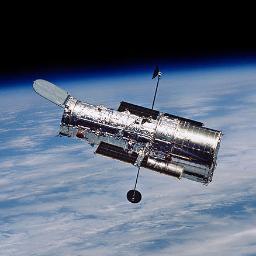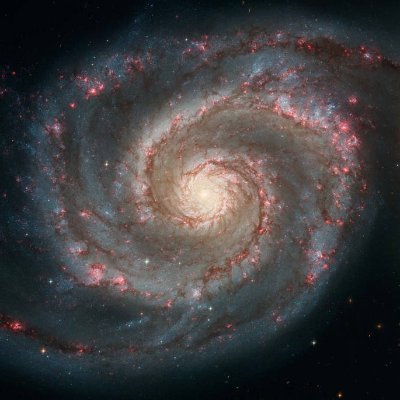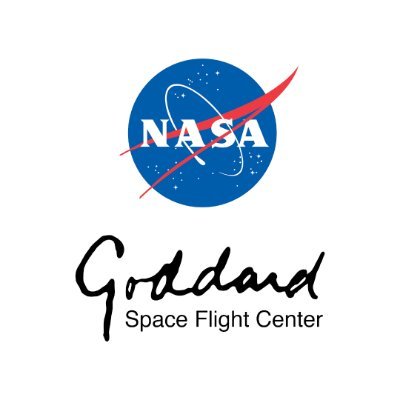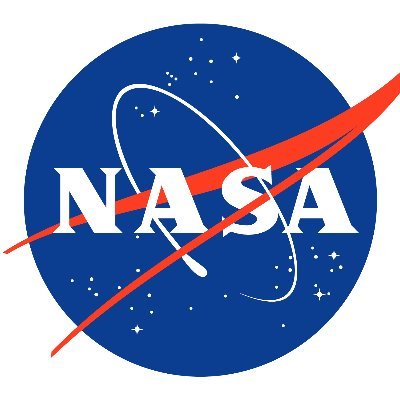
Hubble
@NASAHubble
Followers
9M
Following
1K
Media
3K
Statuses
8K
The official X account for the NASA Hubble Space Telescope, managed and operated by NASA's Goddard Space Flight Center.
Goddard Space Flight Center
Joined March 2008
Hubble recently helped discover that the "wake" left behind by a companion star orbiting Betelgeuse might explain why the giant star’s brightness and atmosphere have changed in strange and unusual ways: https://t.co/HJnchihK4z
9
26
204
Betelgeuse, Betelgeuse, Betelgeuse! ⭐ This red supergiant star is only 650 light-years away, making it large enough and close enough to be a popular source of study for scientists investigating how giant stars age, lose mass, and eventually explode in a supernova. ⬇️
91
339
2K
Hubble found Cloud Nine! ☁️ This is a "failed galaxy": a starless, gas-rich, dark-matter cloud considered a remnant of early galaxy formation. Nicknamed “Cloud-9,” this is the first confirmed detection of such an object in the universe: https://t.co/QXAbbc4FgX
#AAS247
49
321
2K
Hubble's sharp view shows bright stars, tinged red in color due to layers of dust in front of them. @NASAWebb's new image veers into the infrared, revealing the full population of brown dwarfs (objects that are bigger than planets, but smaller than stars) in Westerlund 2!
esawebb.org
Webb and Hubble’s views of Westerlund 2
2
33
260
New year, new stars 🌟 These stars belong to the cluster Westerlund 2, which lives inside a stellar breeding ground known as Gum 29, about 20,000 light-years away.
51
472
2K
Thanks for voting in our audience-favorite poll, and thanks for following us here as we marked Hubble's 35th anniversary this year! Here's to many more discoveries (and stunning views) in 2026. Happy New Year's Eve! 🎉
4
23
205
We're ending 2025 right on target! 🎯 The Bullseye Galaxy is about 2.5 times the size of our Milky Way, and has nine rings — six more than any other known galaxy: https://t.co/XUFzFXBx5I And now it has the distinction of being our X audience's favorite 2025 Hubble image! ⬇️
56
481
2K
Are these images fireworks … or star clusters in space? These space images resemble fireworks because star clusters are groups of stars that share an origin, forming at roughly the same time and location, and are tied together by gravity for millions or even billions of years.
13
107
485
A stellar year, indeed. ⭐ Hubble celebrated 35 years of discovery, as the mission's new views of the universe continue to dazzle – and according to you, these four 2025 images reigned supreme! Time to crown a favorite: Vote below on our most-liked new images on X this year!
92
559
3K
This year, @NASAHubble brought us the Andromeda Galaxy like we’ve never seen it before: an image made of 2.5 billion pixels, created over a decade and more than 1,000 orbits.
35
263
1K
Like holiday streamers, the results of a star's massive supernova explosion streak across space in this Hubble view. The dead star's shredded remains are called Cassiopeia A, and it's the youngest known supernova remnant in our Milky Way galaxy: https://t.co/vR7DSPuQUm
31
245
1K
Merry Christmas! This year, we got you a cosmic swan 🦢 This nebula, Messier 17 (also nicknamed the Omega or Swan Nebula), was imaged by @NASAHubble.
931
4K
19K
Hubble imaged the largest planet-forming disk ever observed! Spanning 400 billion miles, this disk is called "Dracula's Chivito" as a nod to the heritage of its researchers from Transylvania & Uruguay, where the national dish is a chivito (sandwich): https://t.co/3WixLNGnSB
54
254
1K
New stars are forming all the time in our universe. In fact, on average, about two Sun’s worth of stuff is turned into new stars each year in our own Milky Way galaxy. #MondayMotivation
28
192
991
SM3A astronauts released the newly restored telescope back to its orbit on Christmas Day! Explore more images from the mission ⬇️
1
14
151
To the rescue! 🚀 #OTD in 1999, astronauts worked the first of three spacewalks for Hubble's Servicing Mission 3A. The crew replaced failed gyroscopes (used to measure Hubble's speed), and installed a new computer and fine guidance sensor.
19
165
755
We're sending you a holiday card with 4 new winter-themed images from Chandra with data from other telescopes, including our friends at @NASAHubble & @NASAWebb. Each object in the collection gives a wink to wintertime cheer, either in its name or shape.🌲 https://t.co/im6HurCDwX
35
394
2K
Welcome, @NASAAdmin Jared Isaacman. Here’s to a new era of exploration and discovery! 🌌 🧑🚀
Today, Jared Isaacman (@NASAAdmin) was sworn in as NASA’s 15th Administrator. At a time of intense competition across the last frontier, he will lead the most talented minds in the nation to ignite the orbital economy, usher in world-changing scientific discovery, and return
10
37
247
The light from galaxy NGC 4388 took 60 million years to reach Hubble. Shining in this new image, NGC 4388 is just one of 1000+ galaxies that are part of the Virgo cluster – the nearest large galaxy cluster to the Milky Way, our home galaxy: https://t.co/cKSfdntK5L
55
307
2K





